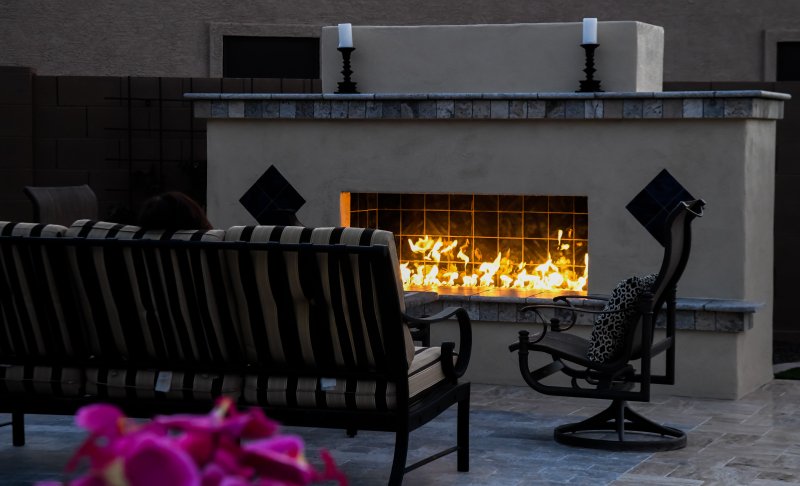Wood-burning fireplaces have charm but come with inconveniences like smoke, ash, and the need to cut or purchase firewood. Gas fireplaces offer a convenient and user-friendly alternative, operated easily with a remote control.
If you’re considering the switch, this comprehensive guide explores the pros and cons of gas fireplaces, the types available, key factors to consider, and installation steps for your home.

Pros and Cons of Gas Fireplaces
Gas fireplaces offer many advantages. They are convenient and low-maintenance, without producing ashes. Additionally, they emit fewer pollutants, like carbon monoxide, nitrogen oxides, and fine particles, making them environmentally friendly.
Gas fireplaces provide various accessories for different styles and effects. But there are a few drawbacks to consider. These units necessitate a gas line and venting system, which could potentially involve the need for drilling, piping, and ducting. Operating them might also be costlier than wood fireplaces..
Types of Gas Fireplaces
There are three types of gas fireplaces:
Vented Gas
Vented gas fireplaces need a chimney or flue to vent combustion gasses outside. They have a realistic flame but lose some heat through venting.
Vent-Free Gas
Vent-free or ventless gas fireplaces don’t need ventilation and are intended to burn gas cleanly and safely indoors. They generate high heat but may also emit odor, moisture, and carbon dioxide. Unfortunately, ventless gas fireplaces are not authorized for installation in most jurisdictions in Colorado.
Direct Vent Gas
Direct vent gas fireplaces utilize a double-walled pipe to vent combustion gasses, either through a wall or roof. They are energy-efficient, safe, and flexible, making them suitable for various installation locations. While they produce a balanced flame, they may require more space than alternative options.
Cost
Converting a wood-burning fireplace to gas involves factors such as gas fireplace type, chimney condition, gas line availability, and labor costs. Vented, vent-free, and direct vent options have varying price ranges, as do installation costs. Additional professionals like plumbers, electricians, or chimney sweeps may be required.
Factors to Consider
When thinking of switching to a gas fireplace, it’s important to consider factors like room size, fireplace heat output, style, and efficiency. Room size determines the BTUs needed for heating, while the heat output indicates the fireplace’s generation of warmth. The fireplace style affects visual appeal and ambiance, while efficiency influences gas usage and heat retention. Choose wisely for the perfect gas fireplace fit.
Steps to Install
Installing a gas fireplace involves several steps that vary based on the type of fireplace, chimney condition, and local codes. Generally, the process includes chimney inspection, gas line installation, firebox construction, surround framing, venting installation, ignition wiring, and system testing. For safety and expertise, it’s crucial to have a licensed professional handle the installation.
Conclusion: The Benefits and Considerations of Converting to a Gas Fireplace
Converting a wood-burning fireplace to gas is an exciting and rewarding experience. Gas fireplaces offer convenience, cleanliness, and eco-friendliness. Researching and consulting with experts is crucial to understanding types, costs, factors, and installation. Ultimately, a gas fireplace can transform your home into a warm, cozy space you’ll enjoy for years.
At The Gas Connection, we excel in gas line installations for fireplaces and other gas hearth products. We also offer the highest-rated fireplace service and maintenance in the Denver Metro area. Contact us today to enhance your home’s comfort and ambiance!